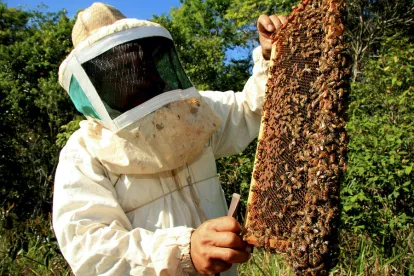Nearly seven years ago, I commented on a California statute defining "fish" to mean "a wild fish, mollusk, crustacean, invertebrate, amphibian, or part, spawn, or ovum of any of those animals". Cal. Fish & Game Code § 45. While I don't consider a snail, a gastropod mollusk, to be a fish, the legislature clearly thinks otherwise.
As a teenager, I kept honey bees (apis mellifera) and I never confused them with fish. In light of a recent decision by the California Court of Appeal, I will now have to reconsider. In Almond Alliance of Cal. v. Fish & Game Comm'n, 2022 WL 1742458, the Third District Court of Appeal interpreted the above definition of "fish" so as to include bumblebees and other terrestrial invertebrates. The case arose from a challenge to the Fish & Game Commission's decision to designate the bumblebee as a "candidate species" under consideration for listing as an "endangered species." Section 2068 of the Fish & Game Code defines "candidate species" to mean "a native species or subspecies of a bird, mammal, fish, amphibian, reptile, or plant that the [Fish & Game] commission has formally noticed as being under review by the department for addition to either the list of endangered species or the list of threatened species, or a species for which the commission has published a notice of proposed regulation to add the species to either list."
Bumblebees and honeybees are in the same family (Apidae) but they are in different genera (Bombus and Apis, respectively). The honeybee species name, mellifera, is Latin for "honey bearer." Perhaps the legislature is just confused about bees. In Section 29414 of the California Food & Agriculture Code incorrectly defines "honeybees" as insects of the genus Apis Mellifica (rather than mellifera). In fact, Apis Mellifica is a homeopathic remedy that is variously bee venom or an entire bee crushed and diluted in alcohol. Because there is no species named "apis mellifica," it seems that in California there are no honeybees and bumblebees are fish.



 />i
/>i

